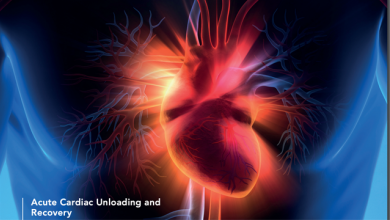Search results
Author(s):
Patrick Vera Cruz
,
Patricio Palmes
,
Nadine Bacalangco
Added:
1 year ago
Author(s):
Kintis Konstantinos
,
Mantis Christos
,
Papadakis Emmanouel
,
et al
Added:
4 years ago
Author(s):
Michael Tsang
,
Sanjit Jolly
Added:
3 years ago
Many advances have been made in the management of ST elevation myocardial infarction (STEMI) over the past three decades.1 This is owed to insight into role that thrombus has in the obstruction of the infarct-related artery (IRA) and the subsequent cascade of the myocardial ischaemia, cell oedema and myocardial necrosis. The institution of reperfusion therapy has revolutionised the care of…
View more
Author(s):
Deepak Natarajan
Added:
3 years ago
Primary percutaneous coronary intervention (PCI) is the treatment of choice in the management of acute ST-segment elevation myocardial infarction (STEMI). It has been constantly observed that, despite restoring good epicardial flow with PCI, myocardial perfusion at the cellular level remains impaired in nearly 50 % of STEMI patients. This led to the development of a new class of antiplatelet…
View more
Author(s):
Fizzah A Choudry
,
Roshan P Weerackody
,
Daniel A Jones
,
et al
Added:
3 years ago
Over the last few decades, primary percutaneous coronary intervention (PCI) has revolutionised the treatment of ST-elevation myocardial infarction (STEMI) with rapid recanalisation of the infarct-related epicardial vessel, resulting in smaller infarct size and a substantial reduction in adverse clinical endpoints.1,2 However, suboptimal myocardial reperfusion is documented to occur in a…
View more
Author(s):
Krishnaraj S Rathod
,
Stephen M Hamshere
,
Tawfiq R Choudhury
,
et al
Added:
3 years ago
Primary percutaneous coronary intervention (PPCI) is the optimal treatment strategy for restoring coronary blood flow in the infarct related artery (IRA) and salvaging myocardium in patients with ST elevation myocardial infarction (STEMI).1,2 Despite this, PPCI fails to restore optimal myocardial perfusion in up to 40 % of patients despite restoring epicardial artery patency as evidenced by…
View more
Author(s):
On Topaz
,
Allyne Topaz
,
Pritam R Polkampally
Added:
3 years ago
Plaque rupture and subsequent thrombus formation account for most acute myocardial infarctions (AMIs). Percutaneous coronary intervention (PCI) is considered the preferred treatment for ST-segment-elevation myocardial infarction (STEMI), for evolving non-STEMI (NSTEMI) and for rescue intervention post-thrombolytics.1 The main goals of primary and rescue PCI in AMI include restoration of a normal…
View more
Author(s):
Darren Mylotte
,
Ruben LJ Osnabrugge
,
Giuseppe Martucci
,
et al
Added:
3 years ago
Transcatheter aortic valve implantation (TAVI) has emerged as a safe and efficacious treatment in patients with symptomatic severe aortic stenosis (AS) at high- or excessive-risk for surgical aortic valve replacement.1,2 More recently, TAVI technology has been extended to treating high-risk patients with failing aortic or mitral surgical bioprosthetic valves, bicuspid aortic stenosis, pure aortic…
View more
Author(s):
John Rawlins
,
Jehangir Din
,
Suneel Talwar
,
et al
Added:
3 years ago
The introduction of lasers for the treatment of vascular atherosclerosis began in the 1980s, initially for the treatment of critical limb ischaemia,1 followed by trials that supported its use in coronary circulation.2–5 However, catheters and technique were rudimentary and associated with complications.6,7 Refinements in catheter technology8 and introduction of safe lasing techniques9,10 have led…
View more
MGuard Embolic Protection Stent
Author(s):
Ricardo Costa
,
Alexandre Abizaid
,
Jean Fajadet
,
et al
Added:
3 years ago
Article














